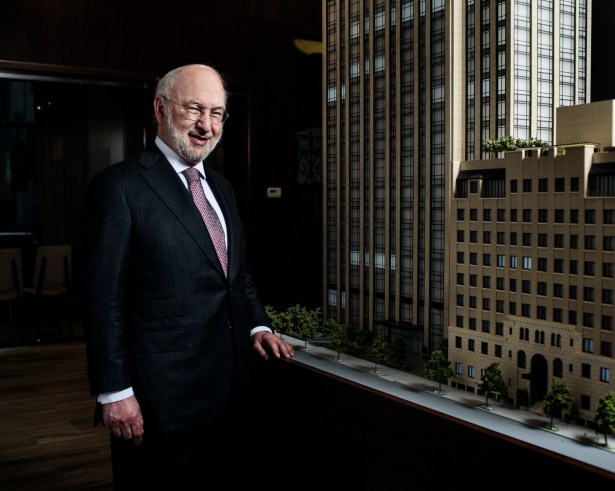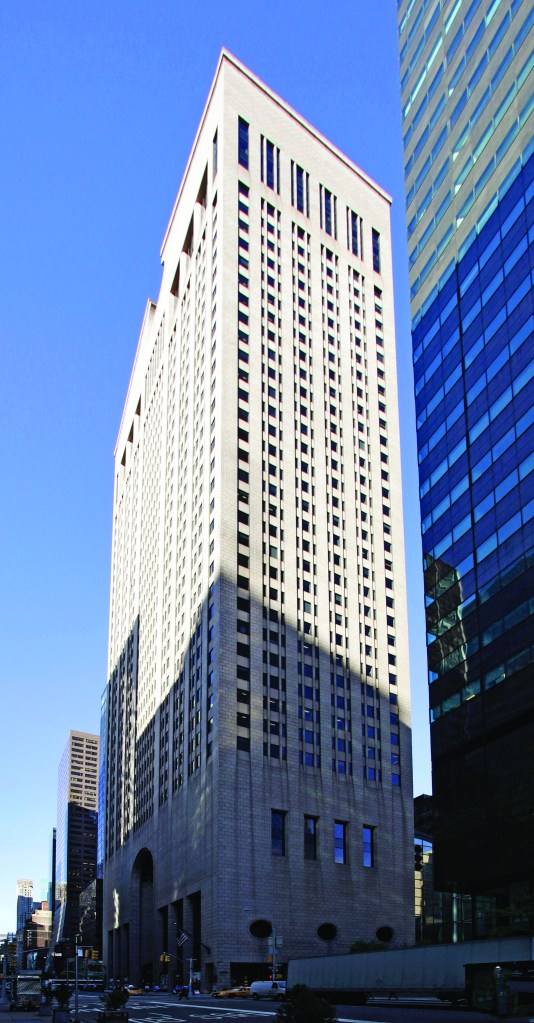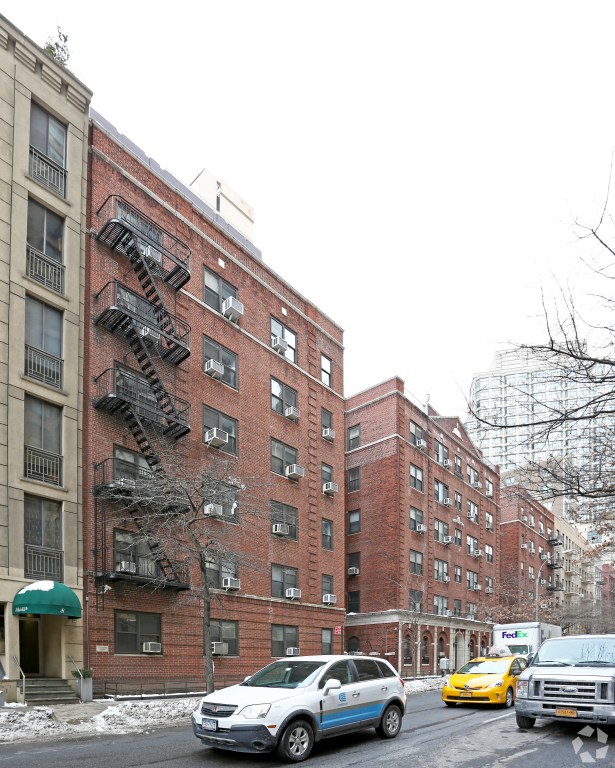High Off His Sale of the Sony Building, David Bistricer Talks Condos, de Blasio
By Liam La Guerre November 8, 2017 9:00 am
reprints
David Bistricer, the managing member of Clipper Equity, has worked through all phases of the market in his four-decade-plus run in New York City real estate.
He’s had highs, like selling the Sony Building at 550 Madison Avenue between East 55th and East 56th Streets to Olayan America for $1.4 billion in May 2016, after paying $1.1 billion for it in March 2013 with Chetrit Group.
And he’s had lows: for example, being placed on the city’s worst landlords list in 2006, when then-Public Advocate Bill de Blasio blasted him because one of his buildings in Flatbush, Brooklyn, had 12,000 violations.
He tried to buy the 5,881-unit Mitchell-Lama complex Starrett City in Brooklyn for $1.3 billion in 2007 but failed. This September, it went into contract for $850 million with Rockpoint Group and Brooksville Company.
“When I was young, my father had a very good friend, a broker,” Bistricer, 69, told Commercial Observer. “He said, ‘I worked on a deal, and it didn’t work out. It was a very big deal. If you think every deal you work on is going to come to fruition, you’ll be 10 times richer than Rockefeller.’ So you work on 10 deals, if two happen, that’s success.”

But the Borough Park resident and father of five adult children unquestionably has been finding success as of late. Together with Chetrit Group, Clipper Equity is transforming the shuttered four-building Cabrini Medical Center at 220 and 230 East 20th Street and 215 and 225 East 19th Street into a residential a condo project, Gramercy Square, with 223 units. The Woods Bagot-designed development features a different style for each property: a modern, a prewar, a boutique and a tower building. It also has about 38,000 square feet of amenities including a pool, a gym, a theater, yoga rooms and a wine cellar. And there’s ample green space with a courtyard, a greenhouse and landscaping around the buildings. Units start at just over $2 million, but the roughly 7,000-square-foot penthouse of the tower—which has 18-foot high ceilings and a 5,680-square-foot terrace—is going for $33.7 million. He’s hoping to sell the condos out for $800 million. Half of the units are already under contract.
While giving CO a tour of four model units (in a one-story building adjacent to the project built ground up just for a sales office), Bistricer gave insight into his thought process behind selling the Sony Building last year, working with the shadowy Chetrit head Joseph Chetrit, his new real estate investment trust, Clipper Realty, and being in the limelight of development in New York City.
Commercial Observer: Tell us about your background.
David Bistricer: I came here as a very young child. I was born in Brussels. My parents are [Holocaust] survivors. So they live with a certain sense of, “We’re survivors we are going to make it.” My mother [Elsa] was in a concentration camp. My father [Moric] was in hiding in Budapest. They survived the war that way, each with their own experiences that are unspeakable in many ways. They lost a lot. But they rebuilt. And they picked themselves up. My father came here, and within a year, he started buying property on the Upper West Side. That was his profession.
How does one buy property without money, credit or connections?
He came with money. And he always said that he came with his business knowledge of many years because his father was in business and he taught him what he knew—and his father taught him what he knew.
What lessons did you learn from your father?
[He] always said there is no real school for a businessman. Obviously you can hone the skills, but you have to have certain [natural] skill sets, like a musician. A [knack for business] is a certain trait that some people have or don’t have. Some people are academics and some are business people.
Were you born with the talent?
I think so. I have some of that in me. And we’ve done business outside real estate, as well.
Like what?
We were in the wiring and cable business [with a company] called Coleman Cable. We were in that for over 15 years. About three years ago [it sold for $786 million, according to published accounts]. It was a public company. We took it private, built it up, merged it. We took it public again, and then we sold.
How much did you make when you sold it?
We did very well. The stock was $12 per share when we bought it, and we sold it for $24.
How did you make it so profitable?
[Part] of the valuations of the project [before we bought Coleman Cable] was a lot of vacant warehouses that they weren’t using. We saw the value was there. We sold what we didn’t need. And we kept what we needed.
Actually, [Coleman Cable] had four different types of businesses. Wiring and cable is one of them. We sold three of them and we paid off all of the debt. One was plastics. One was mobile homes. And the fourth one made certain types of parts for the wiring and cable businesses. After we shrunk it down to one division, then we merged it to another wiring and cable business, and we grew that business and took it public. And there was another company in the business that wanted it and paid us double what it was trading for. It was fun. It took 15 years, but we had a good time.
What’s the thinking with the Gramercy Square amenity space?
A very important part of this project is giving people the ability to go outdoors, get fresh air, come out and get together with neighbors and talk and do other things.
There are four different styles here—why not just make it all the same?
First of all, it’s a large site, and we wanted to make something available for everybody. Some people like traditional. Some people like modern. Some people like high towers with large ceiling heights. We wanted to make a little bit of everything—not cookie-cutter products. That’s a smart business decision.
Are you going to move in here?
I’m probably going to buy a unit here, but my home is in Brooklyn.
Which one would you choose? Are you a modern guy?
It’s not my choice; it’s my wife’s.
Which building would she like?
Right now we have a traditional house. We are building an apartment in Israel now, and she chose modern.
Is there parking at the Gramercy Square site?
There is parking underground. We are selling those parking spots for $250,000 each. We have over 50 spots.
It’s interesting to see you doing luxury condos since you and your father started in the rental and co-op business. Is there a difference?
It’s the natural progression of the business. We have been doing this for a while. It’s not the first [condo] that we have done and it won’t be the last. We take advantage of opportunities. And we try to do what we can to improve what is there. We are not really trying to change anything. [Cabrini Medical Center] was a place that was closed. The community is very supportive of what we are doing. We are not taking away any sunlight or casting any shadows.
But there is a lot of bad news about luxury condos these days. Why would you want to build now?
New York City is one of the most valuable cities in the world. You have so many people coming here from all over the world. And as bad as the world gets—dangerous things coming in other parts of the world—what we are seeing is people want to put their money here. Think about it. If you have money to invest in any part of the world, you are going to put your money here. Not every place is that safe.
Are you confident that you will be able to sell out?
Without a doubt. You hear about the market with the super luxury on 57th Street, Billionaires’ Row, where you are talking about a very high price per foot. But there’ll be people who will say, “You know what, I won’t buy an apartment for $5,000 a square foot. I’ll buy $2,000 a square foot, and I’ll still have a beautiful place to live.” You walk around the city, and it’s jammed. The city is crowded, and there is no place to go. And people are making money and the businesses are doing well. And it’s a safe [investment].
You have a partnership with Joseph Chetrit on this project. Is he as reserved with you as he is with us?
No. He just doesn’t talk to press.
Why do some in the Orthodox community not like to be in the limelight?
I talk to the press, and the reason that I talk to the press is because press is one of the ways that people know about you and your projects. And if you want to interact with the public as we are doing here, people have a right to know who you are. If you want to be in the shadows, it’s okay, but I think it’s the proper way to deal with people. Let them know who you are, what is going on. Then they’ll feel better about the company. Sometimes you can’t avoid it. The press is going to write. When you get to a certain size, they are going to write. So if you don’t take the calls, they are going to write what they know, and it may not be what you like.
How did you start your relationship with Chetrit?
We met on a certain project [in Brooklyn] by coincidence. It was someone else’s project, but we both wanted to buy it. So, we just bought it together.
What is your take on working with him?
He’s a businessman.
He’s got the talent, like your father would say?
Yes, definitely. He is a nice guy and he knows the market. We both have the same philosophy and are trying to make an honest living. It is very simple. People should be able to rely on you. When you say you are going to do something, do it.

Would you call him a friend?
Yeah, we are friends. Obviously, we get together, socially and things like that. I know all of his kids, and he knows my kids.
Another project you were going to work on with Chetrit was the Sony Building. Why did you sell the property just three years after buying it before your plan to convert it to condos came to fruition?
We had a fantastic offer that was too compelling not to sell. We made a very good profit, and we didn’t have to do anything. We didn’t have to invest any money or time.
But if you had taken the time to invest in it, you could have potentially made more money, no?
Listen, “could have, would have, should have” is not something that a good businessman says because you never know. Maybe we would have made more money keeping it, but one in the hand is worth two in the bush, right?
What projects are you doing in Brooklyn now?
We just finished a rental project near Prospect Park [at 125 Parkside Avenue]. It’s almost a square block, and it’s the first new development on that whole side of the park.
That’s one of the things that we do. We bring in new development and redevelopment into new neighborhoods that haven’t seen it in many years. We take that plunge. We try to keep our eyes on where the opportunities are.
How do you feel about East New York, Brooklyn? Is that a place that you would take a plunge?
East New York needs a catalyst. It needs one guy to come in and say, “O.K., we are doing something.”
Well you could be that catalyst, right?
Not right now, but if somebody shows us something and it’s the right price [then maybe]. If you build in New York and you build good-quality housing at the right price for the right neighborhood, people will come.
Starrett City recently sold for about $850 million, but you tried to buy it for $1.3 billion in 2007 from Starrett City Associates’ Disque Dean and Carol Deane? Why didn’t your deal work out?
What happened there was that that is a Mitchell-Lama project. When we were buying the project, the Mitchell-Lama program expired, so the owner had the right to take it out of the Mitchell-Lama program as of right. The owner decided not to do it but to sell it to us. We then had the option to take it out of Mitchell-Lama. That was an option in my contract, but we didn’t have legally the right to do [that] as of right. We needed permission.
And the government—Sen. Chuck Schumer, who helped me on a project in Sheepshead Bay—said, “we put in so much money into this with Section 8 subsidies and all of these things, that if we have the ability to say no we are going to say no” because they wanted to keep it affordable.
So the price didn’t work. The pricing depended on the increase of the rents. The increase of the rents was greatly reduced. We were going to buy it free market and take the rents to free market.
Do you have any regret losing that one?
We knew that, when we were buying it, the government could say yes and the government could say no. The government allowed many other Mitchell-Lama projects to go out, but they were much smaller.
Not everything works out. That’s part of the business. You have to be able to walk away from something when it doesn’t make sense.
De Blasio, public advocate at the time, put you on the worst landlords list in 2006 for the violations at your Flatbush Gardens rental building. Can you explain why there were all those violations?
I met with him at the time, and I said you are being very unfair because we bought it with 12,000 violations. Right now [in 2017] we have 250 violations. And that’s far less than before. It’s an amazing feat.
When we bought the project [in 2005], it wasn’t working. There were no lights, heat—nothing was working. And we put in the money to fix it up. [We put in] over $20 million. We just spent $3 million on landscaping. It’s a very nice place now.
What do you think about de Blasio now?
He is trying. He is trying to do affordable housing. He is trying with the new 421a plan. He is trying, but it’s not easy.

Do you think he has done a good job?
I think so. I’m not a political person, but I think he is trying to do the right thing.
You brought Clipper Realty to the public earlier this year. Why?
It’s an expansion of the business—that’s basically what it is. It gives you public permanent capital.
How is it going?
It is going very well. It’s an extension of our public experience. Because we were in the public arena with the wiring and cable, we knew all of the ins and outs of the public sector. We have a fantastic board of directors [which includes Sam Levinson of Glick Family Investments, Howard Lorber of Vector Group, Robert Ivanhoe at Greenberg Traurig and Robert Verrone of Iron Hound Management Company].
And we just bought [10 West 65th Street]. We paid $79 million for it—under $600 per square foot. It’s a great price. It’s one building off [Central Park], so it’s a great location, and the building wasn’t touched since the 1940s. A lot of the units are going to be renovated.
We bought it with 10 units vacant. We have [53,000 square feet of] air rights we are going to use.
Companies looking for more money have tapped the Israeli bond market. What about you?
We looked at that, and we choose not to do it. It’s very expensive. You take on debt and pay high interest. And that market is sometimes open, and sometimes it’s closed. I won’t say that we’ll never do it, but right now that’s not the path we chose.


